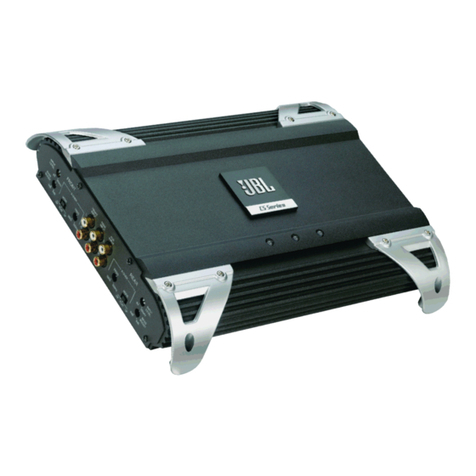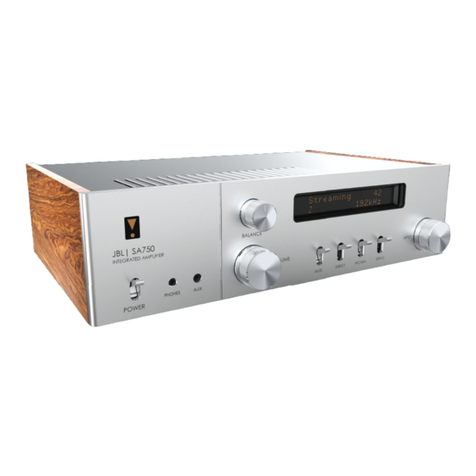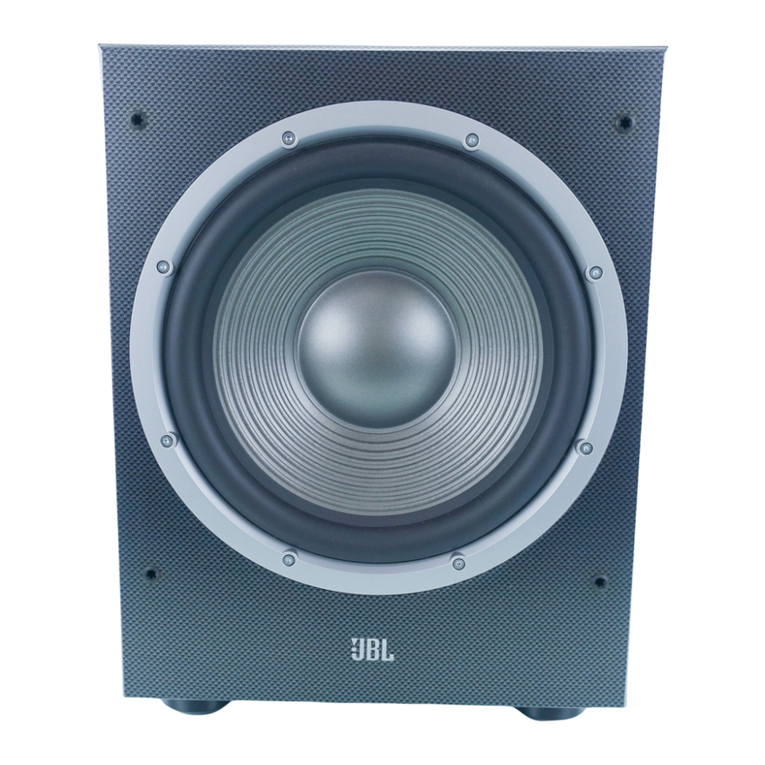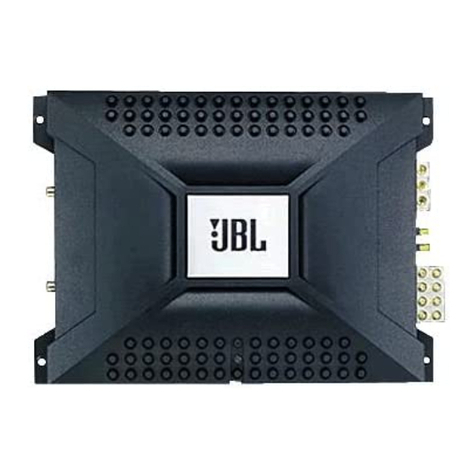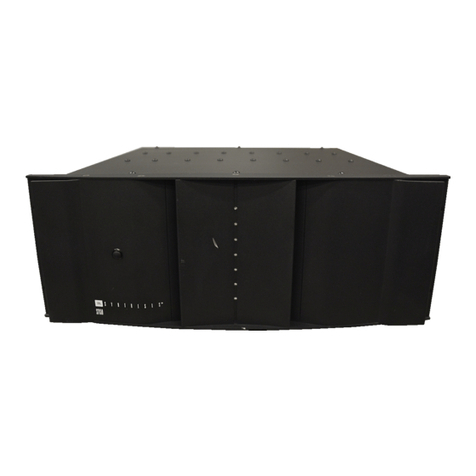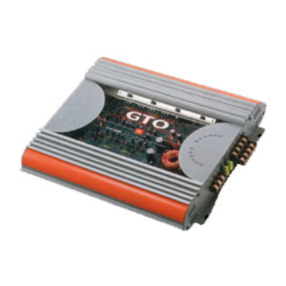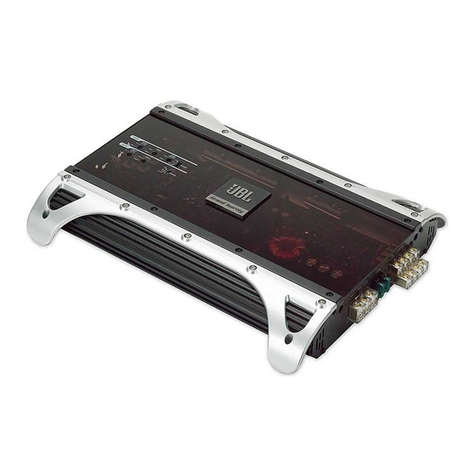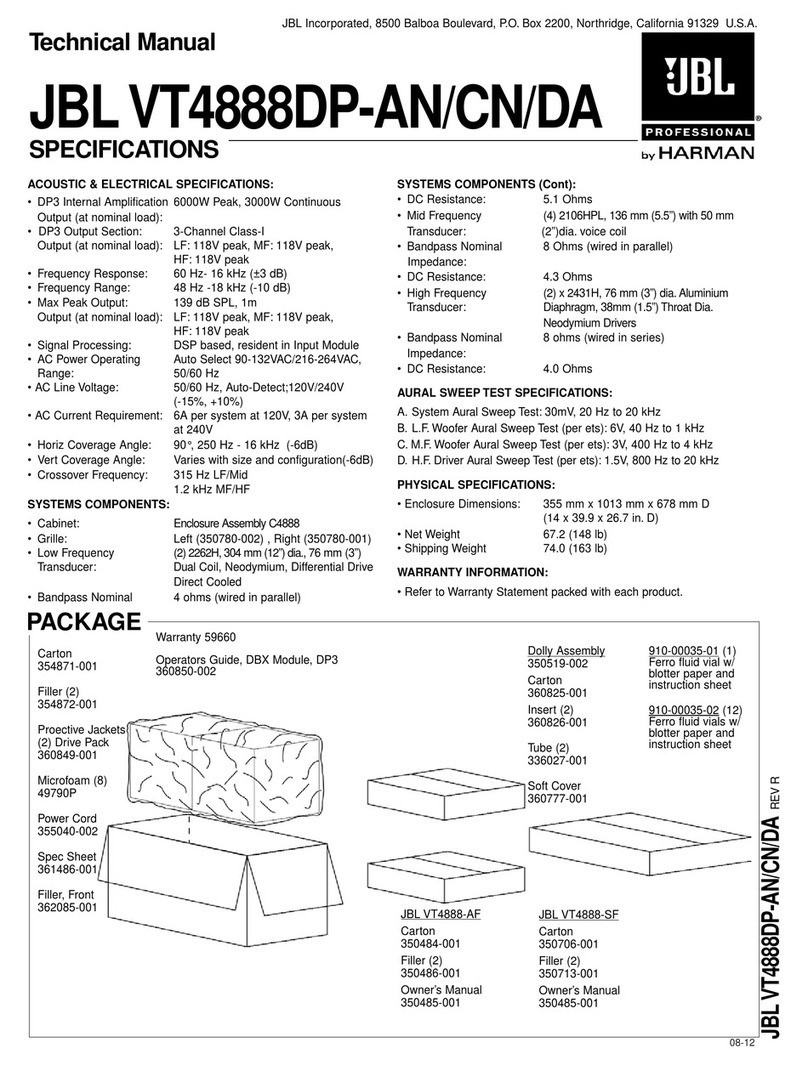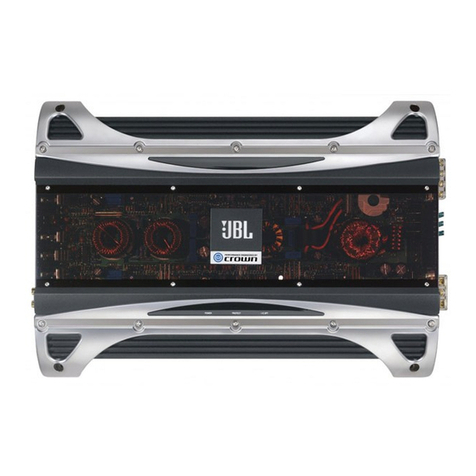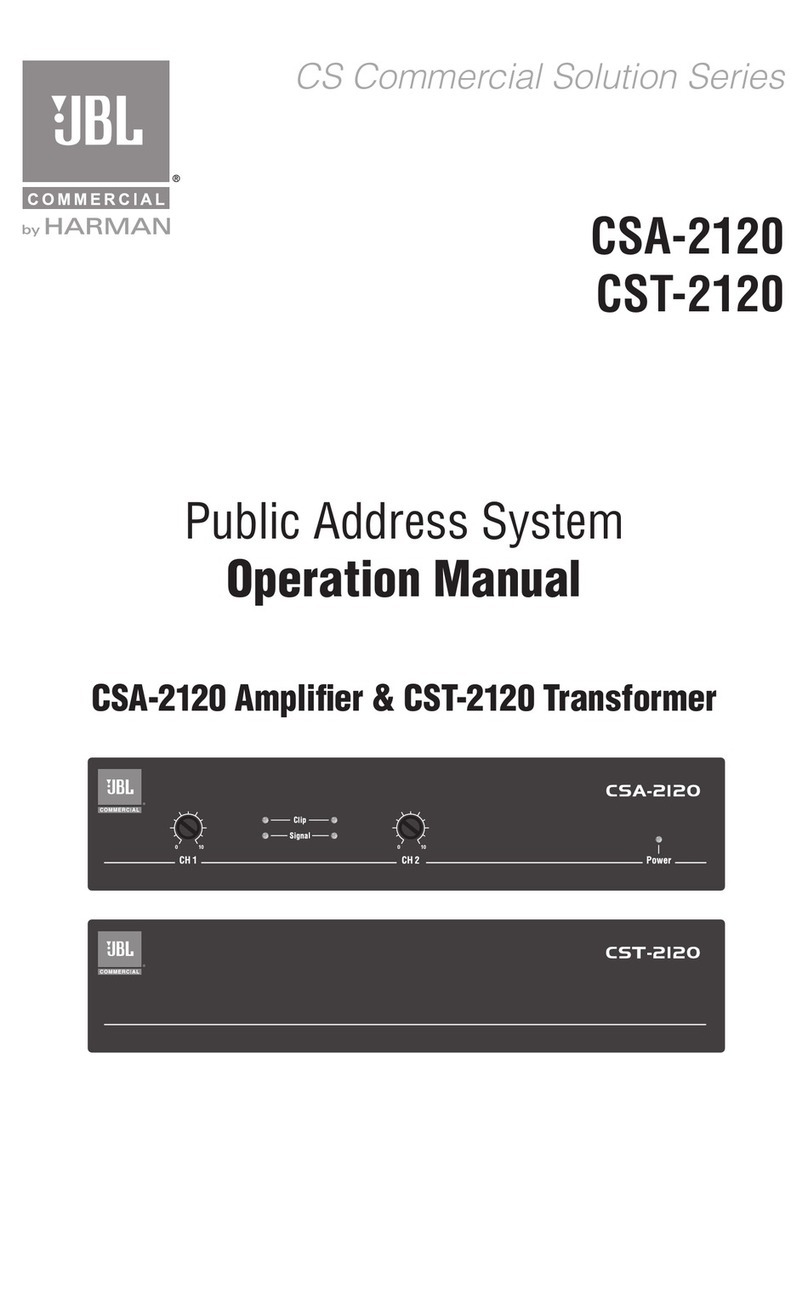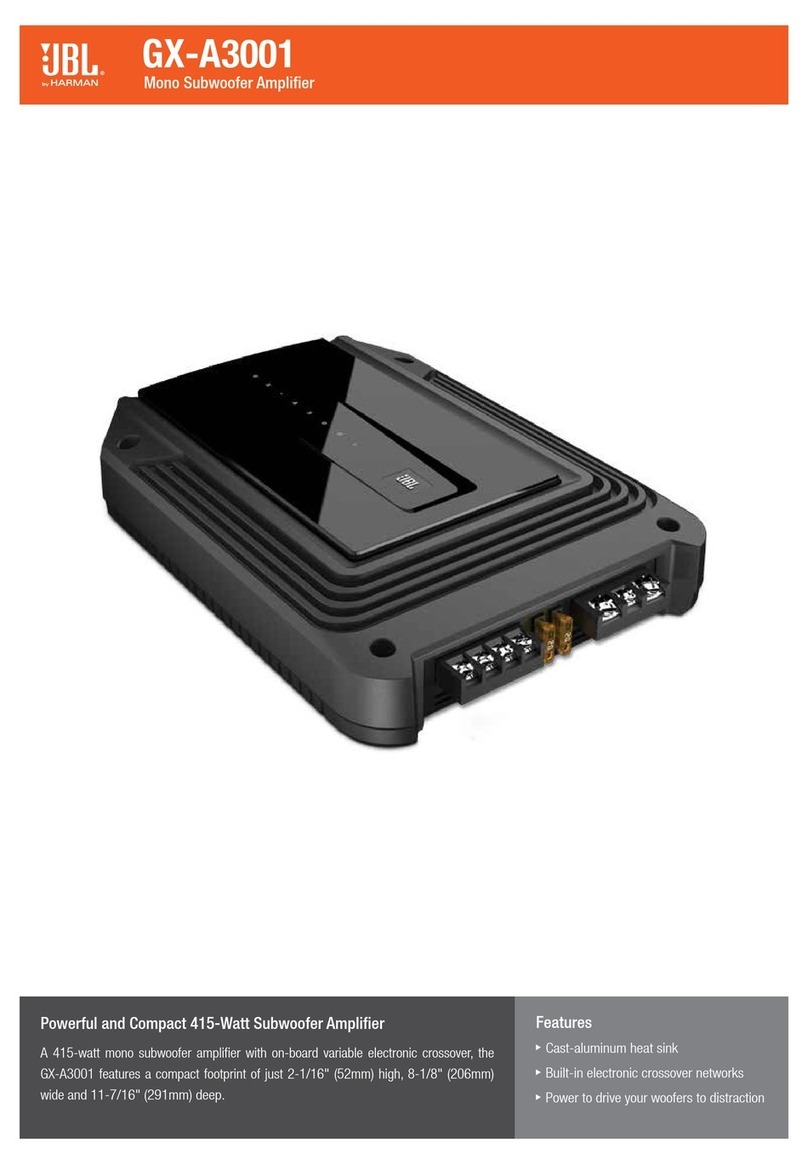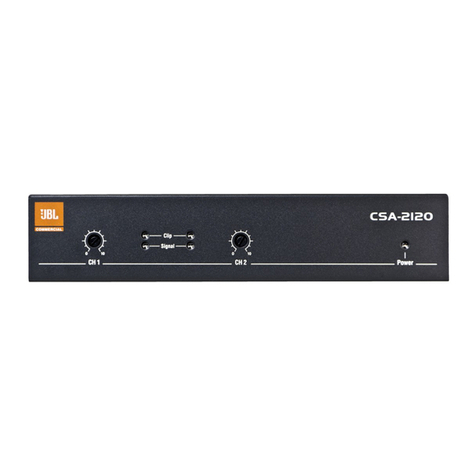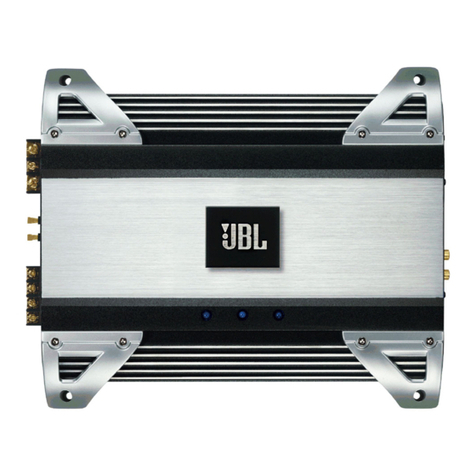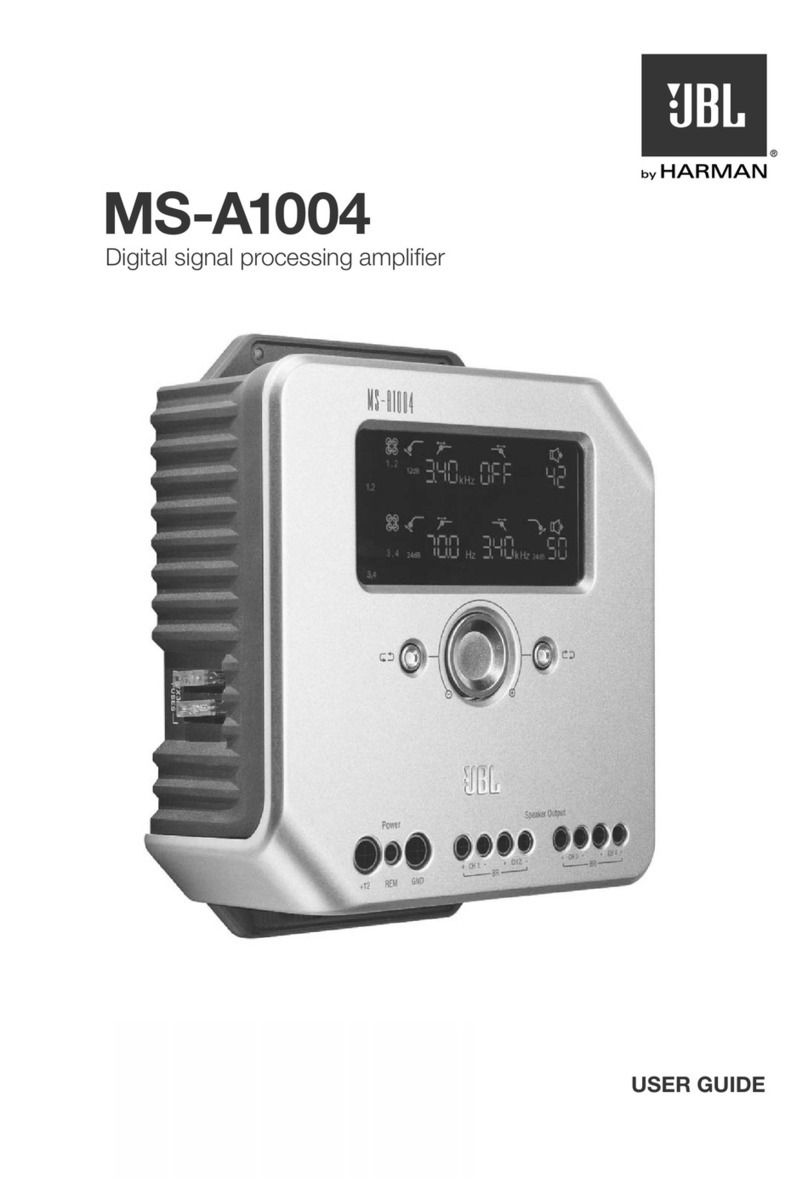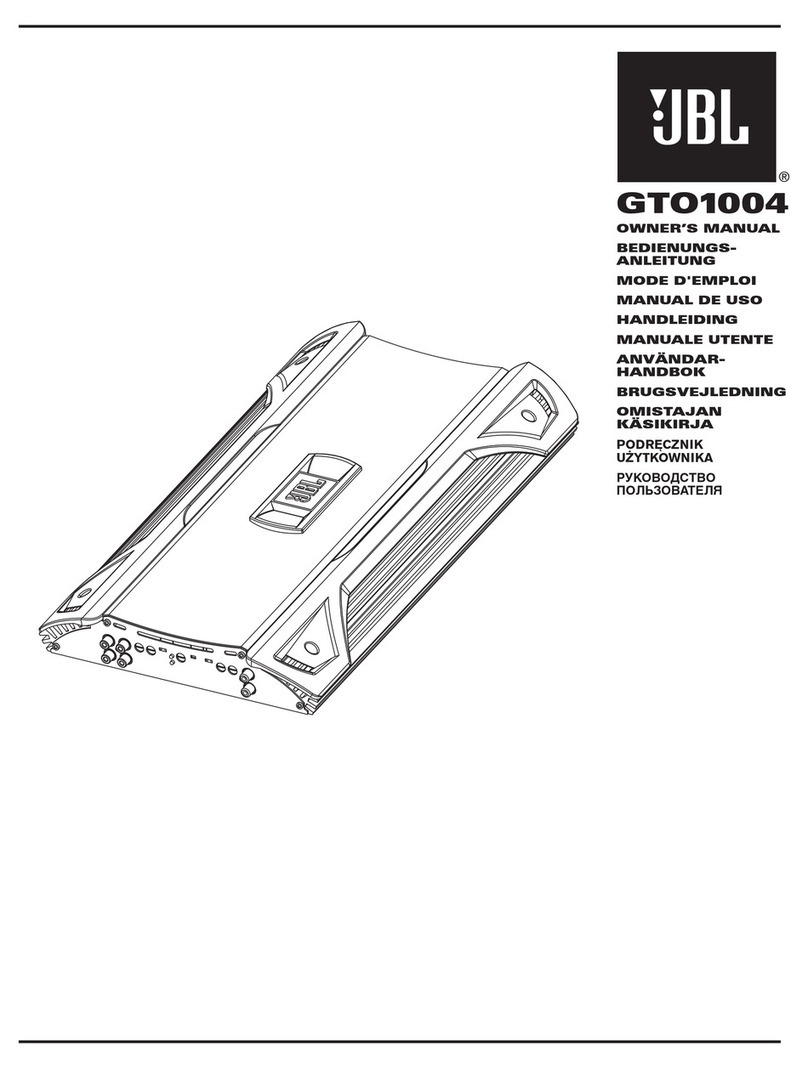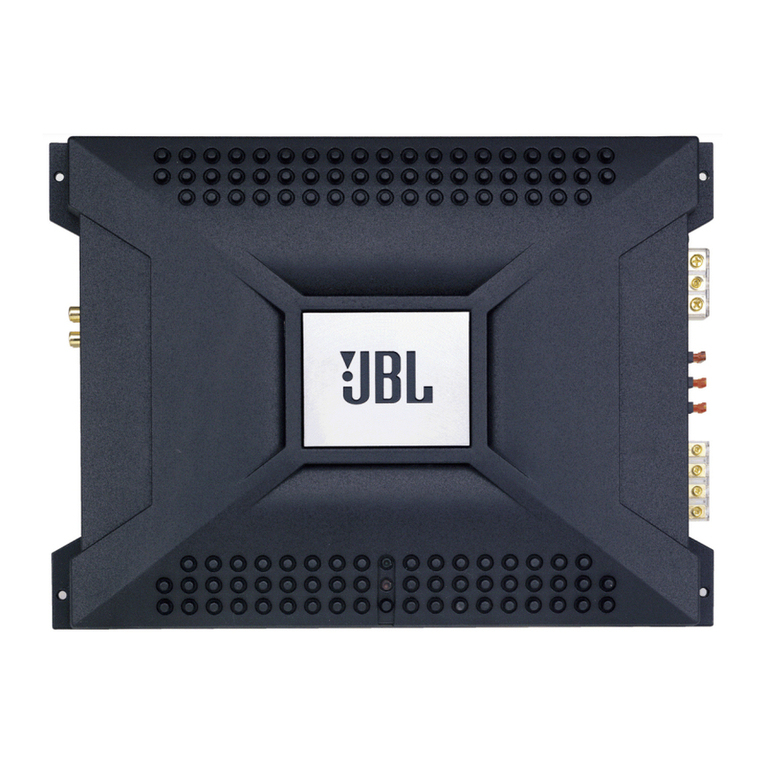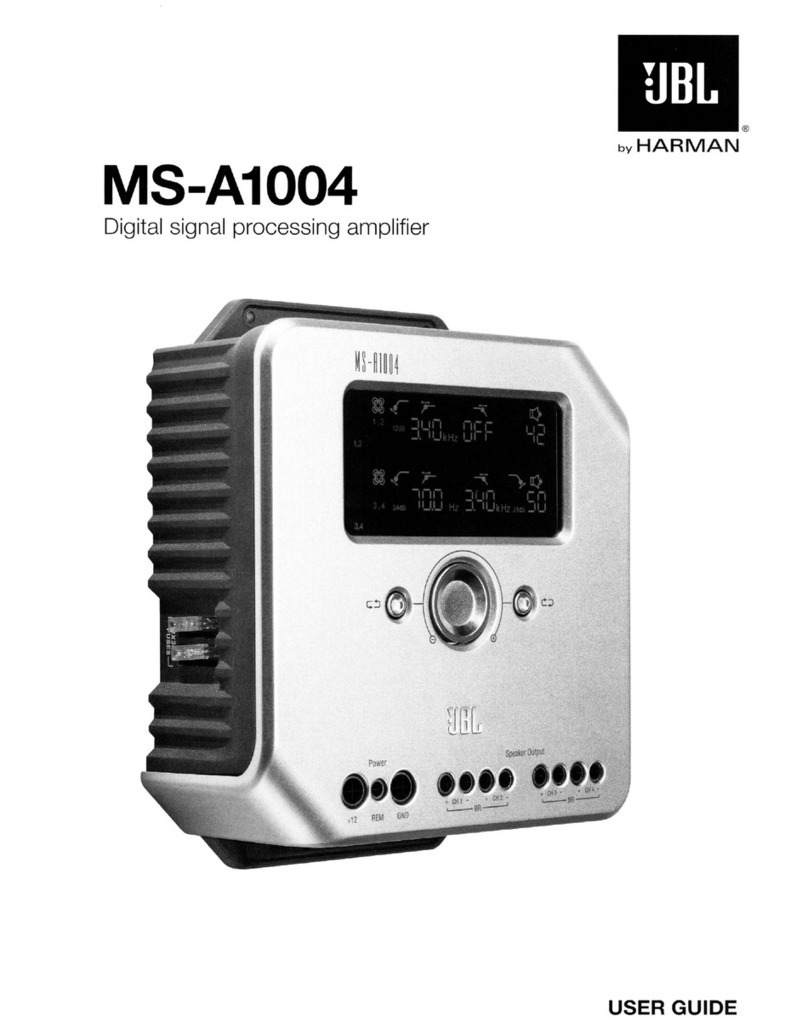
SECTION I
INTRODUCTION
The JBL Model 6290 power amplifier has been designed to meet
the most critical professional sound requirements. It Is rugged and
road-worthy, conservatively rated, and can handle reactive loads
with ease.
The engineering design approach stresses the optimization of
each stage, allowing high slew rate and relatively low loop gain.
Overall feedback has been held to aminimum and Is employed only to
stabilize the gain and the operating point. This design approach
results In an amplifier with excellent performance under the most
demanding dynamic Input and load conditions. As evidence of the
stress on dynamic rather than static or steady-state distortion
mechanisms, transient Intermod uIat Ion distortion measures less than
0.03$ by the DIM 100 test. (Lelnonen, Otala, and Curl, "A Method
for Measuring Transient Intermodulation Distortion (TIM)", Journaj^
of the Audio Engineering Society ,Vol. 25, No. 4, April, 1977, pp.
170-177.)
This JBL amplifier uses multiple 200-watt output devices In
complementary configuration for high reliability and low distortion.
At rated power Into 8ohms, these output devices are operated at
less than 25$ of their rated power dissipation. The benefit Is high
reliability and long component life.
Reliable operation Is ensured through the following protection
modes: current Is limited under Improper load or drive conditions;
output relays with front panel Indicators protect the loudspeaker
under conditions of DC offset or excessive low-frequency transients.
The relays also provide power-up, power-down, and "brown out" muting
to protect loudspeakers from AC power transients. Clip Indicators
allow for system optimization.
The JBL amplifier may be operated In the normal stereo mode,
dual mono mode, or bridged mono mode. These modes are switch
selectable on the rear panel.
Active differential Input circuitry offers the benefits of
balanced operation without the use of Input transf ormers. Input
connections may be made via 3-pIn XL-type connector, three-cond uctor
(TRS) 6.3 mm (1/4 In.) phone Jack, or barrier strip. The barrier
strip has separate terminals for audio ground and chassis ground.
The rack ears and heatsink of the amplifier are made of high
grade aluminum extrusions; the chassis Is fabricated of heavy gauge
steel. All Internal components are easily accessible through
removal of top and bottom panels. Front panel graphic details are
Incorporated on the rear-side of apolycarbonate laminate which Is
virtually Indestructible.
1-1
